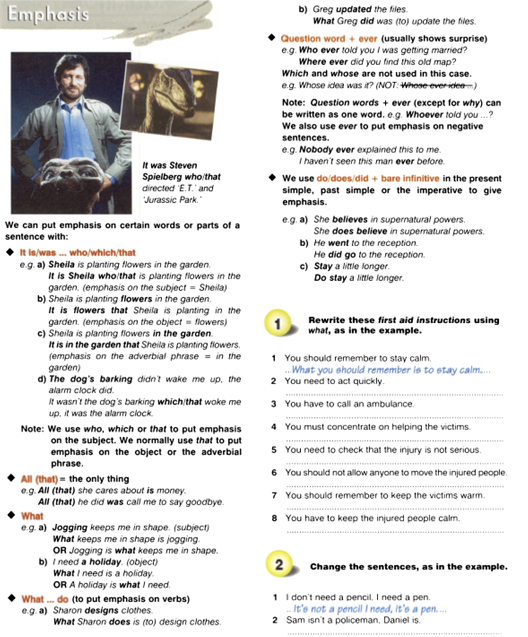Phrasal Verbs
The structure of a phrasal verb is:
| verb | + | adverb |
Phrasal verbs can be:
- transitive (direct object)
- intransitive (no direct object)
Look at these examples of phrasal verbs:
| phrasal verb | meaning | example sentence | ||
|---|---|---|---|---|
| direct object | ||||
| transitive | put off | postpone | We will have to put off | the meeting. |
| turn down | refuse | They turned down | my offer. | |
| intransitive | get up | rise from bed | I don’t like to get up. | |
| break down | cease to function | He was late because his car broke down. | ||
Separable phrasal verbs
When phrasal verbs are transitive (that is, they have a direct object), we can usually separate the two parts. For example, “turn down” is a separable phrasal verb. We can say: “turn down my offer” or “turn my offer down“. Look at these example sentences:
| They turned down my offer. | |
| They turned my offer down. |
However, if the direct object is a pronoun, we have no choice. We must separate the phrasal verb and insert the pronoun between the two parts. Look at these examples with the separable phrasal verb “switch on”. Note that the last one is impossible:
| John switched on the radio. | |
| John switched the radio on. | |
| John switched it on. | |
| John switched on it. |
Many dictionaries tell you when a phrasal verb is separable. If a dictionary writes “look (something) up”, you know that the phrasal verb “look up” is separable, and you can say “look something up” and “look up something”. It’s a good idea to write “sthg/sby” as appropriate in your vocabulary book when you learn a new phrasal verb, like this:
- get up
- break down
- break sthg off
- turn sthg/sby down
This tells you if the verb needs a direct object (and where to place it).


